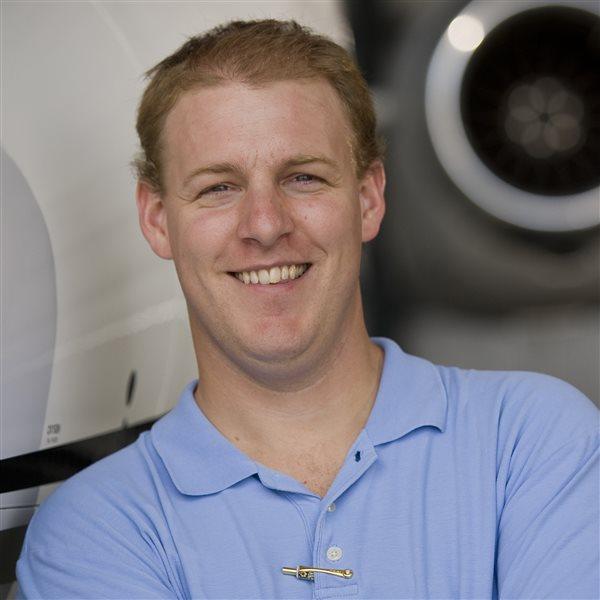Some people like to shovel snow from a neighbor's driveway or volunteer at the local soup kitchen. My biggest contribution to society is slightly less noble. I work hard to help designated pilot examiners reach their quota of practical test failures.
To be fair, I am sometimes selfish and end up passing, but my overall checkride history must have some examiners salivating. My illustrious track record began in May 1999 with my private pilot checkride. The examiner, a robust man with a reputation to match, told me over the phone a few days before the test to plan on him at 225 pounds for weight-and-balance purposes. When we met, I realized his declared weight was as much of a fantasy as the chances of us being under gross weight in our small Cessna 152. When I presented him with the problem, he said, "No sweat, we'll burn it off in the pattern."
Even though I knew at the time the examiner's solution to our situation was poor (Don't you have to take off to burn it off in the pattern?), I didn't exercise my duty as pilot in command. Instead I simply nodded and assumed that as a person in authority he must have known what he was talking about. Maybe I failed right there, although he certainly didn't hesitate to jump in the airplane with me.
We began the flight in the pattern, as promised. Things went fine, save my somewhat poor short-field landing. But he graciously gave me another shot, and I performed to the FAA's mandated standard. It wasn't until he had me depart on my planned cross-country that things fell apart. We were supposed to fly from Gainesville, Florida, to Tallahassee, Florida, a direction in which I'd never flown. A few miles into the trip, I knew I was off course, but for the life of me I couldn't figure out why. I struggled with the plotter in the airplane to verify my course, but the only thing I could manage to verify was my mistake. If it were my first blunder, maybe he would have given me another chance, although one has to assume that getting lost on a checkride is a sin without penance. Had this been a real flight, the obvious action would have been to turn around, land, and regroup. But being a checkride, he told me I had failed before asking me to turn around.
When we got on the ground I realized the problem. Instead of placing the straight edge of the plotter on the courseline and reading the course off the center section's reference to a line of latitude, I did the opposite and placed the straight edge along the line of latitude and read the course off the center section. Needless to say, I never did that again.
At the time, I was devastated. My training had gone very smoothly - perhaps too much so, as Budd Davisson points out in his story "Making Lemonade." Davisson makes the case that mistakes are good for students to make because they teach lessons never learned from a book or an instructor. I thought about some of my own primary students as I read Davisson's story. Davisson is right that the wunderkind who never flubs a landing is sometimes hard to teach.
But whether for students who excel or those who have trouble with the basics, checkrides are always a stressful experience. I joke about examiners having quotas, but Bob Schmelzer, an experienced DPE, says quotas do exist in flight tests, at least somewhat (see "Checkride: The Law of Percentages"). Schmelzer says that while examiners don't have cop-like goals, they are expected to fail at least a few applicants. I thoroughly enjoyed reading Schmelzer, mainly because my years of frustration at failing the checkride can now be directed at my first over-gross examiner, whom I realize was simply keeping the FAA off his tail.
How do I know this? Simple - when I became a CFI, my own wunderkind student passed his checkride with the same examiner, thanks in large part to the fact the examiner conducted the same checkride every time. His pass rate must have been extraordinary.
The practical test standards make FAA checkrides an open-book test, but the secret among CFIs is that many examiners conduct the same checkride for every applicant. Schmelzer also covers this in his story. But even if your instructor doesn't have the latest report on exactly what will happen on your checkride, the law of percentages says you'll do just fine. Because like speeding on the highway, I've done my part to help meet the quota.
. . .
I also hope to do my part in helping your learn-to-fly experience to be as positive and successful as possible. As the deputy editor of AOPA Flight Training and the person now responsible for the editorial direction of the only magazine dedicated to flight training, I look forward to using my background as a frequent student and experienced flight instructor to provide insider tips and ideas to make learning to fly easier and more fun for you.
I love hearing from readers, so please send thoughts, ideas, questions, and flight training photos. See you at the airport.
E-mail Ian J. Twombly, deputy editor of AOPA Flight Training, at [email protected].



